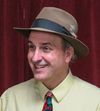Sunshine School
How the Rotary Club introduced special education into the San Francisco school district 100 years ago.
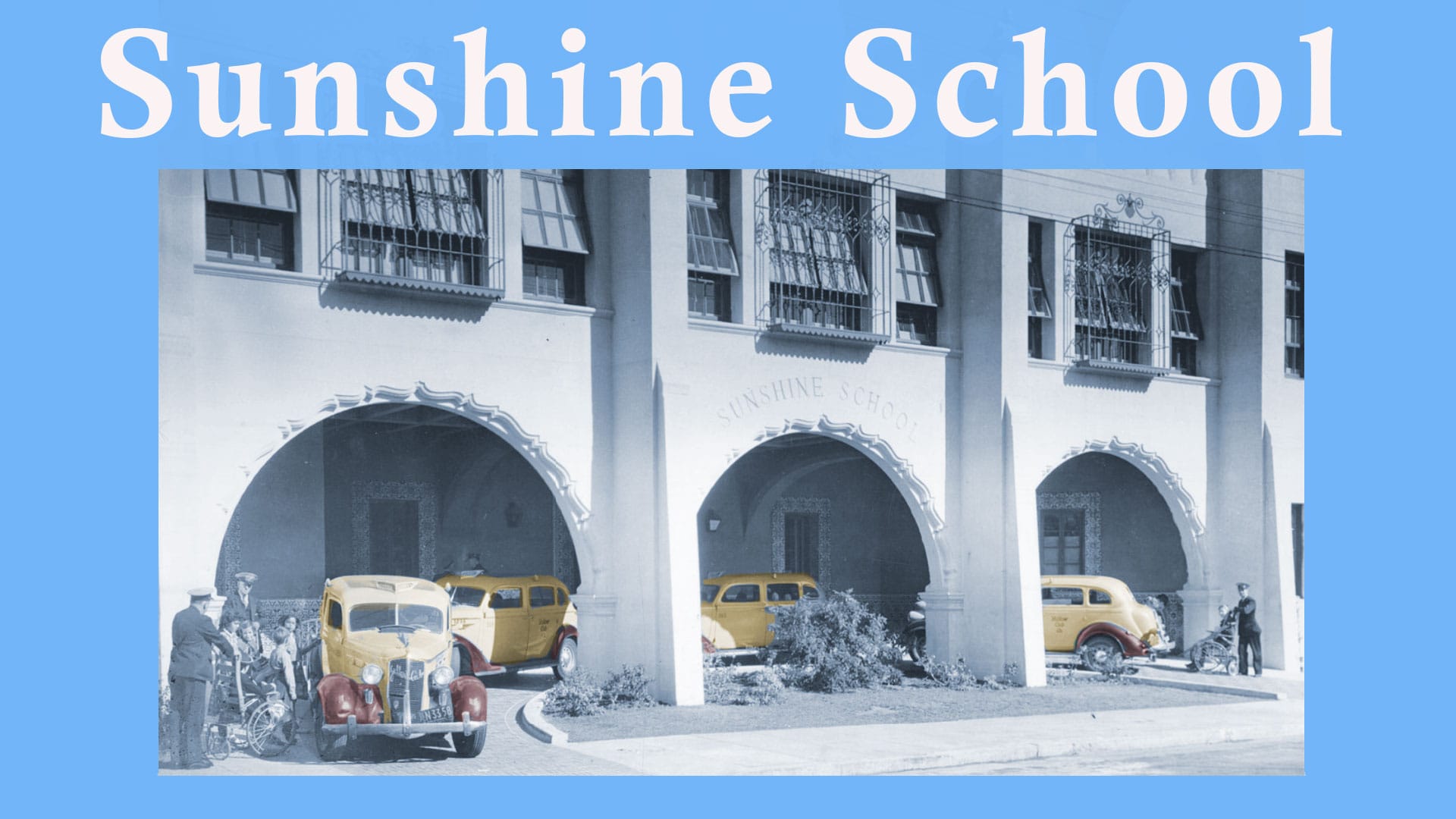
The San Francisco school district is in trouble with issues political, managerial, and financial.
There were recalls of board members in 2022, the superintendent seems to be barely holding on to his job, and now there are planned school closures, including of Sutro School, where my mother, uncle, brother, and I all attended.
In addition to all this, the school district left the special education program millions short in this year’s budget with a deficit of dozens of instructional vacancies to start the school year. This possible violation of federal law spurred the board of supervisors to call an emergency hearing on October 1, 2024.
Ironically, the whoops-we forgot-that-$20-million-in-the-budget gaffe comes in what may be considered the 100th anniversary year of special education in the San Francisco school district.
Sunshine School
In the early 20th century, children with special needs had little support in the public school system. Many parents had to rely on charitable institutions or their own resources to educate their kids.
But with a belief that disabled children should have the same access to education as others, the Rotary Club of San Francisco undertook a one-year experiment with the school district in 1924.
With $4,000 in Rotary Club support, a small Western Addition building behind an old church was transformed into “Sunshine School.”
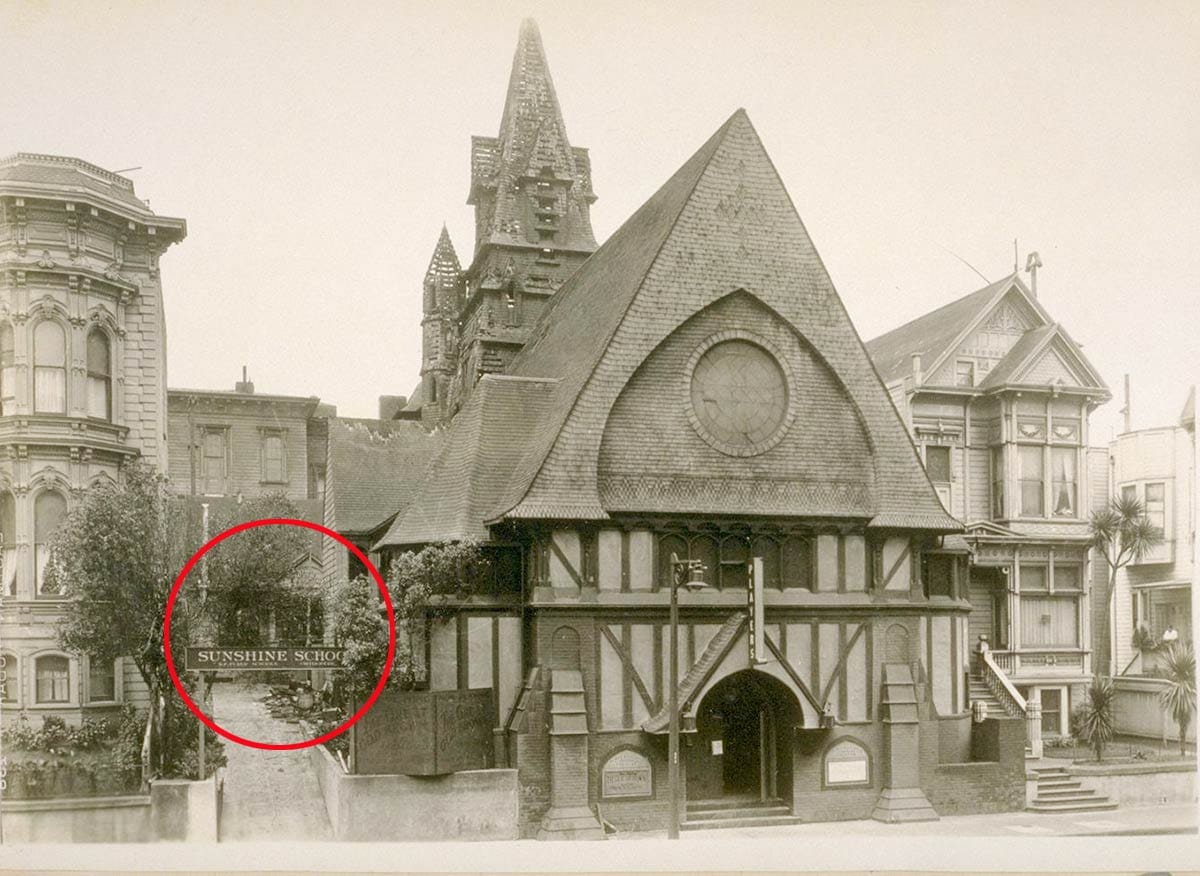
(Quick aside #1: That photograph above documents a fire at the former Methodist Episcopal church building then being used as an amateur theater. Don’t Google Streetview this block now. You’ll be disappointed.)
The Rotarians’ Sunshine School focused on children with mobility challenges, what the California Department of Education would call “orthopedic impairment” today.
The Rotarians arranged for hired taxicabs to deliver 21 children from their homes to Bush Street each day. There, a staff of four teachers managed a curriculum of academics and vocational training, but also provided physio-therapy. Rather than hard-backed chair at desks, there were padded recliners. Stairs were minimized, pathways opened for the use of crutches and leg braces, and physical therapy equipment installed.
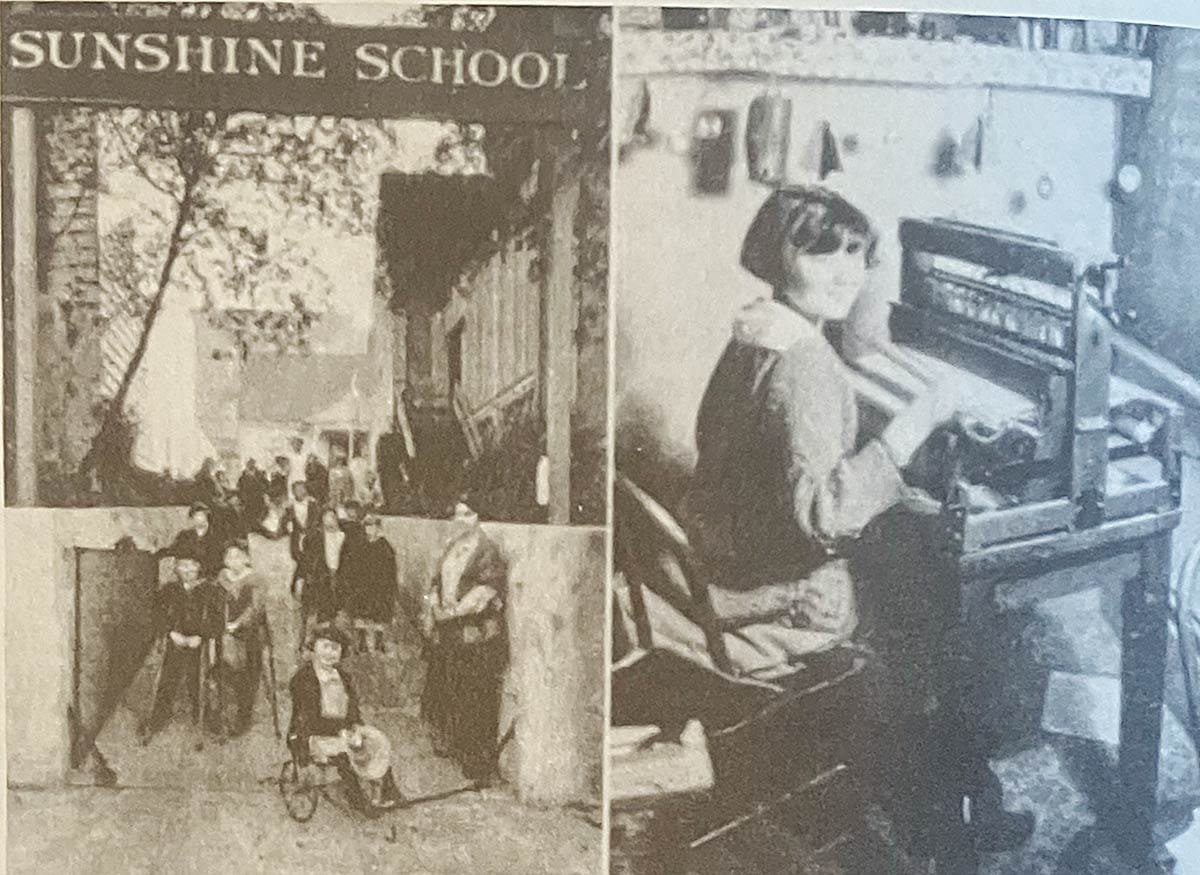
The Rotary Club ran a public campaign to both identify more children who could benefit, and to build public support to formally incorporate a city special education program. They succeeded. In 1925 Sunshine School became an official site of the school district, increasing its enrollment to 35 students.
The Bush Street building soon was soon full. In 1927, Sunshine School moved to two buildings in the back lot of the Mission High School at Dolores and 18th Street. Enrollment increased to 60 students.
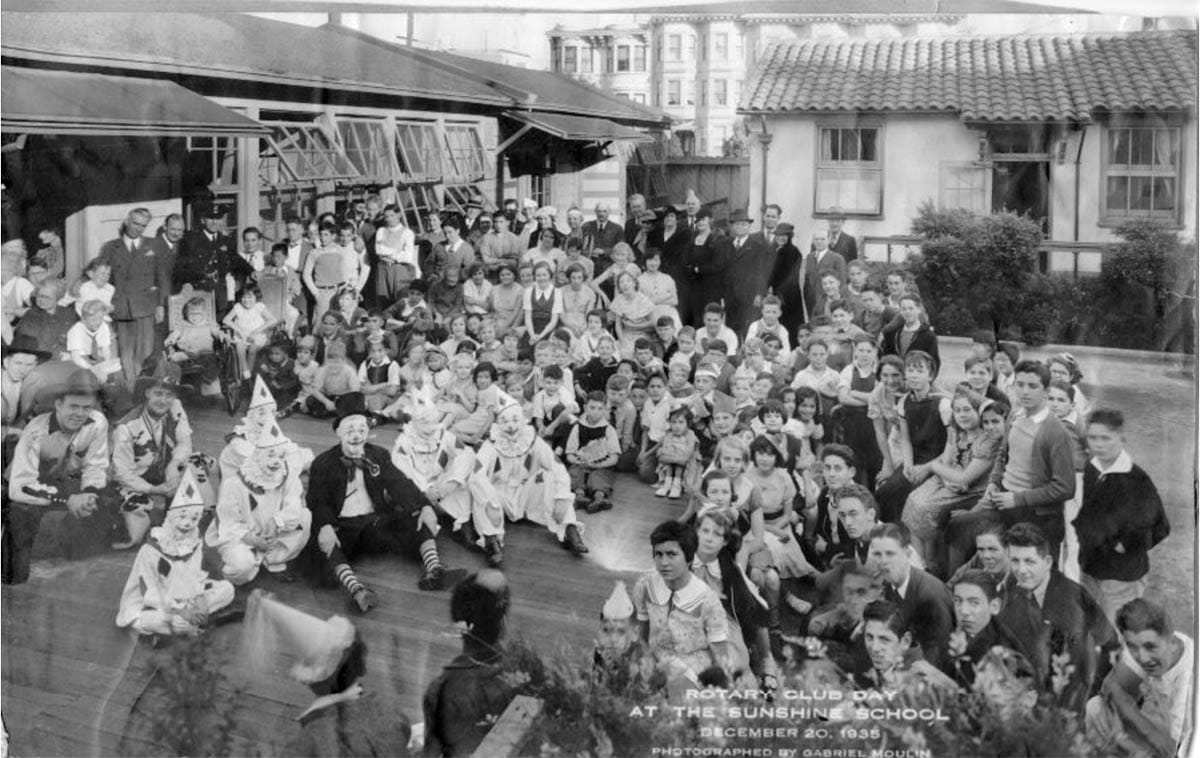
By now, the Rotarians didn’t need to convince anyone. The movement to offer all American children a “normal” educational experience had gained momentum and the San Francisco PTA Congress prioritized the issue in 1926.
(Quick aside #2: While mostly done with good intentions, 1920s philanthropic language and ideas are tough reading in the 21st century. Cringe-inducing terms are used for the children, “disabled” being about the best they could do. The articles are often written in treacly fairy-tale style with pitying airs. Plus, this was the heyday of eugenics (still plaguing us today!). One of the considerations of the local PTA congress was legislation to prevent “unhygienic” marriages thought to cause “physically and mentally deficient children.” Yeesh.)
By 1931, there were 90 students at Sunshine School and the staff had grown to 10, including a physical education teacher assigned with personalized exercises for each child. The PTA bought the school handsome wicker wheelchairs for the school’s use and covered the lunch expenses for needy families. The Rotary Club kept up its support.
When Roosevelt’s New Deal made federal money available for new school buildings, San Francisco saw an opportunity to create a purpose-built facility for children with special needs, the first such west of the Rocky Mountains.
On November 10, 1935, the ground was broken for a new Sunshine School on Bryant Street between 25th and 26th Streets in the Mission District.
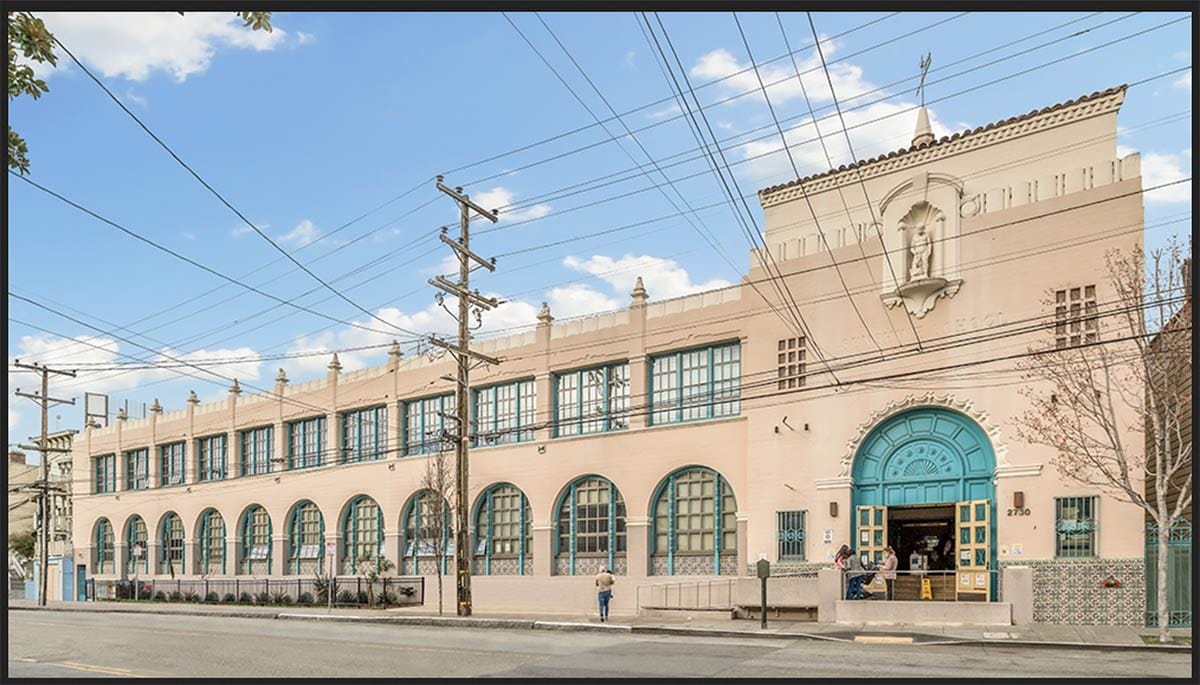
On the exterior, the last Sunshine School looked similar to other Spanish Colonial Revival-style schools built during the New Deal era. Inside, it possessed truly unique qualities.
Architects Albert A. Schroepfer, Charles F. Strothoff, Martin J. Rist, and Smith O’Brien worked with public health professionals and teachers to design a barrier-free first-floor plan. This was decades before the Americans with Disabilities Act (ADA) of 1990.
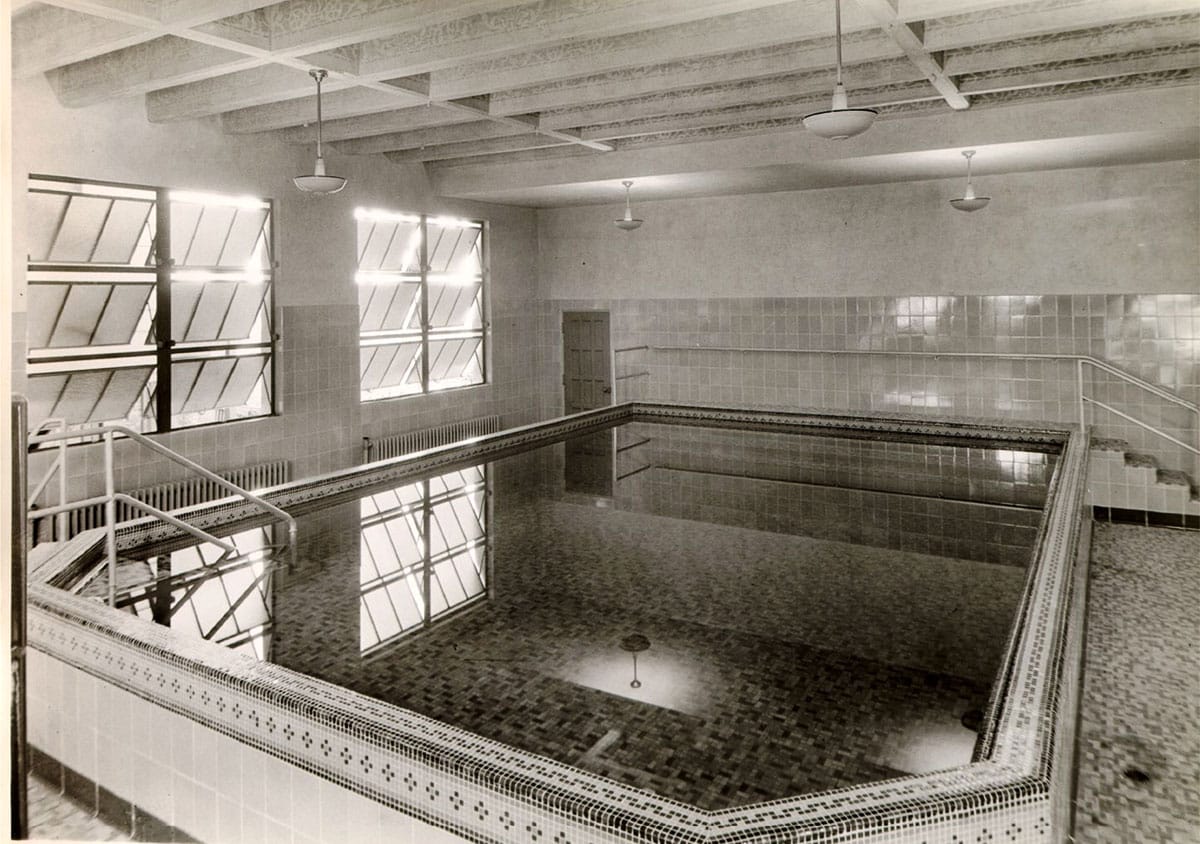
There was a therapeutic pool and gymnasium, open resting room with cots, and a dining room with specially prepared meals delivered from San Francisco General Hospital.
When Nancy and I were first dating in the early 1990s, she had a job at the Teen-Age Pregnancy and Parenting Program (TAPP), which used (and still uses) part of the old Sunshine School building. I remember being struck by the bright airiness of the interior with its surprising open-air courtyard.
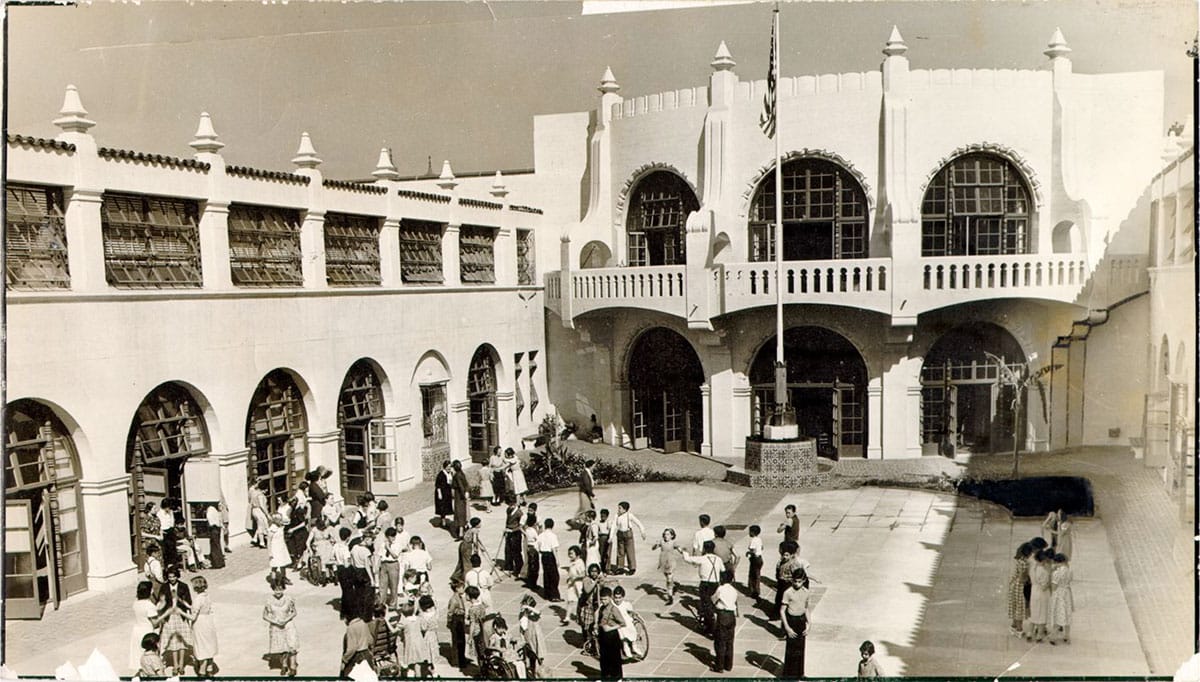
Using simple materials and working with a limited budget, the architects still found ways to make it one of the most beautiful buildings in the school district. Mexican tiles frame doorways and windows. Monkey gargoyles stare down from the rooftops. The building was designated San Francisco City Landmark #286 in 2019.
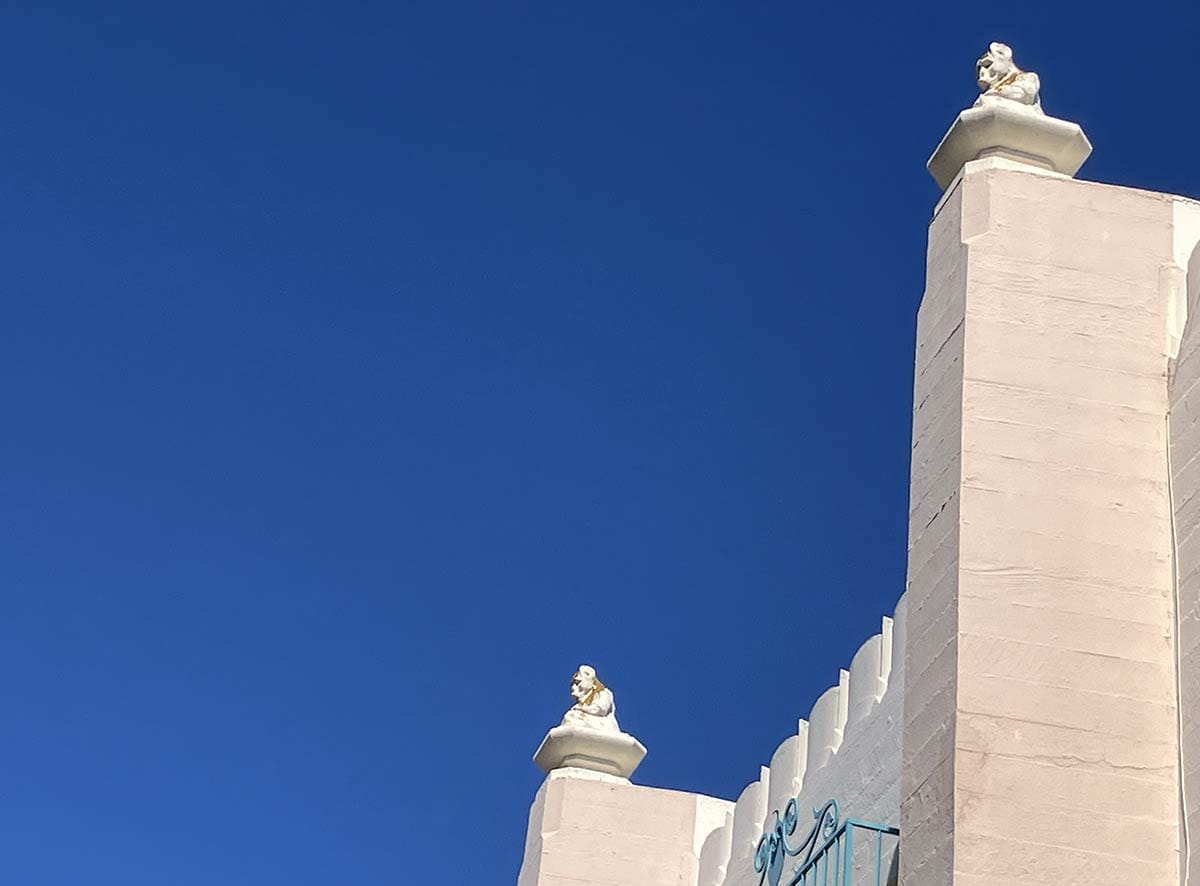
In addition to pupils with orthopedic challenges, the new Sunshine School planned to add children from the nearby Buena Vista “Health” School, which handled district students with chronic and acute illnesses such as asthma, heart disease, and tuberculosis.
This melding was not without controversy.
The Sunshine School community understandably worried about exposing their children to infectious diseases. A Solomonic compromise was reached by essentially splitting the building. The former Buena Vista children used the entryway on Bryant Street side and the upper floor of the building. The orthopedic kids had the first floor and had a half-circular automobile driveway incorporated into the Florida Street side of the building for taxicab pick-ups and drop-offs.
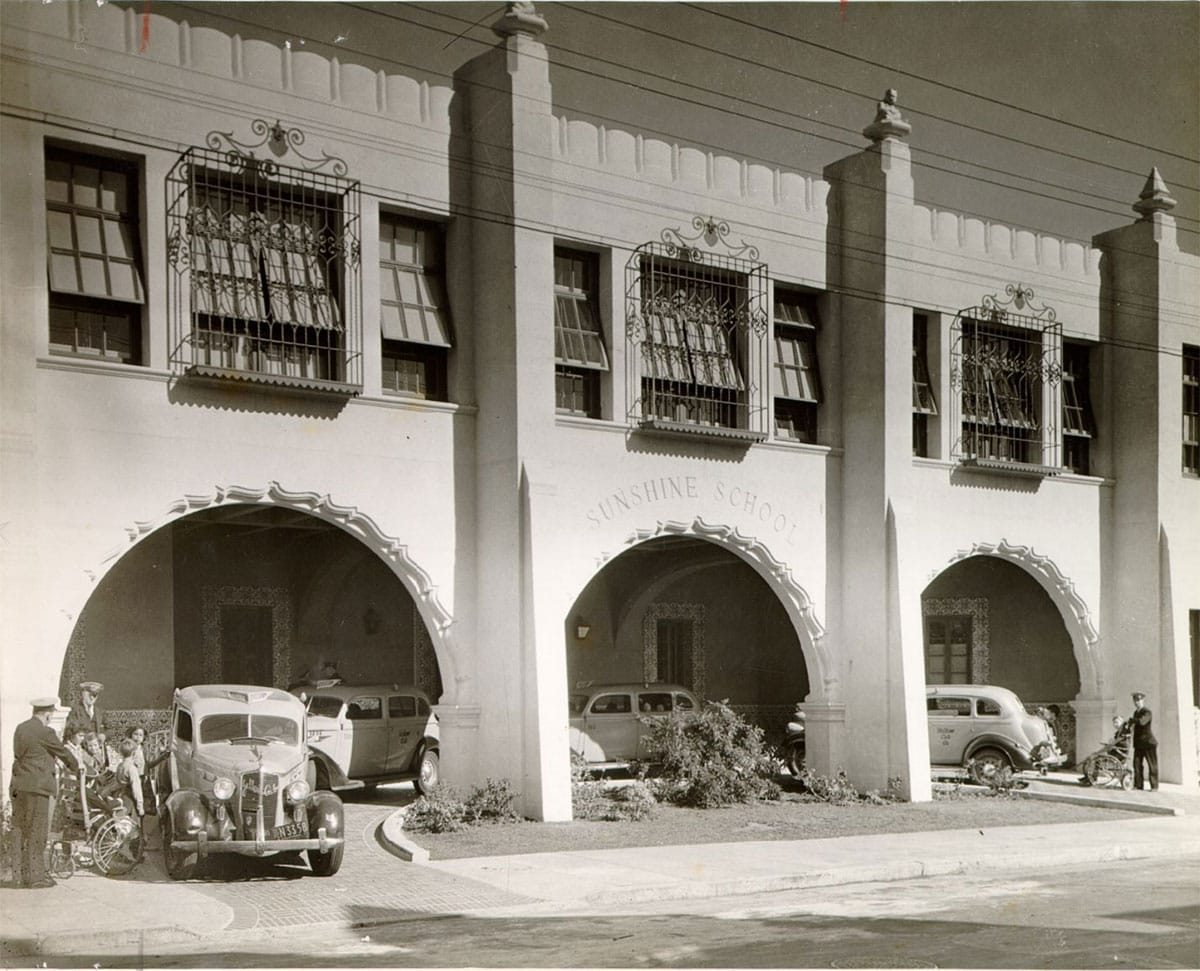

By the 1970s, the movement to provide an inclusive educational experience for all children progressed further and special-needs children began being assigned to mainstream schools.
In 1985, the Sunshine School building became the new home for Hilltop, the alternative high school for teen parents. TAPP and other agencies moved in to use other parts.
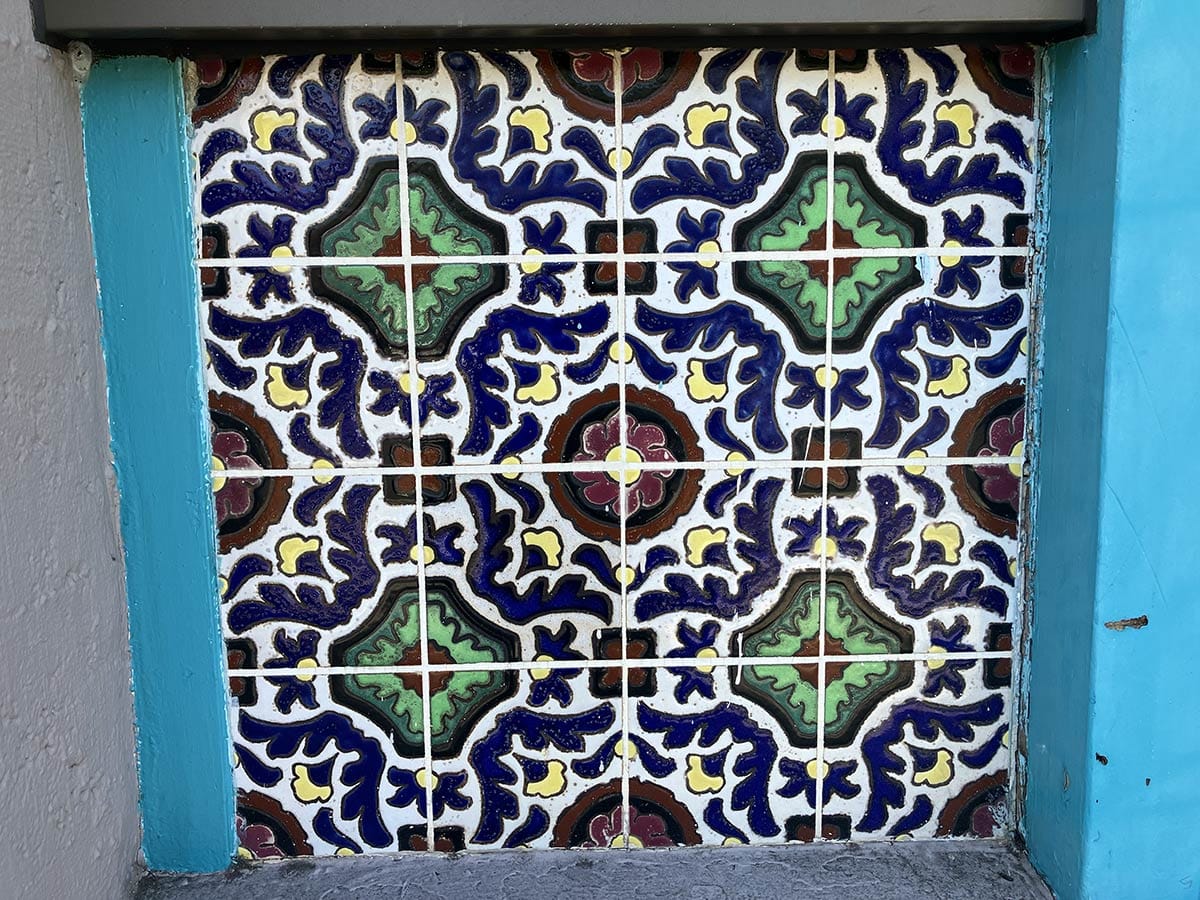
At Sunshine School’s 1937 dedication ceremony, U.S. Commissioner of Education Dr. John W. Studebaker plainly stated why accommodation for public special education was necessary. Perhaps our city today needs to be reminded:
“The problem we are attempting to solve here is a national one, born of a love for humanity. The Sunshine School was constructed because a Nation is beginning to realize its duty under democracy to be just to all of its citizens.
“It is a public act, not of benevolence, but an act which typifies the democratic workings of social justice. In body, mind and spirit these children are fundamentally the same as the rest of us. Are they not, then, entitled to the same rights and opportunities?”
Woody Beer and Coffee Fund
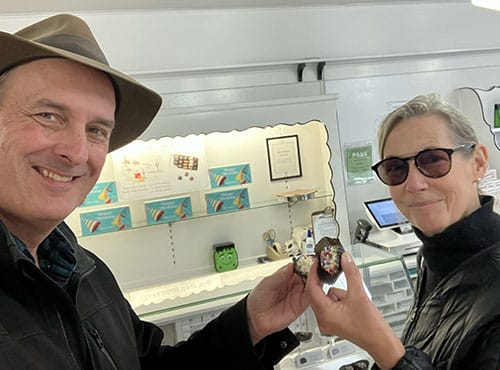
I’m off on a road trip to New Orleans for a conference and some vacation time. But let me know if you’d like to have a drink (or a Milk Molasses Chip) when I return!
Sources
“Crippled Kiddies Now Have Own School,” San Francisco Bulletin, September 5, 1924, pg. 8.
“Rotarians Ask Names of Crippled Children,” San Francisco Bulletin, January 27, 1925, pg. 10.
“P.-T. Congress Suggests Aid for Children,” San Francisco Examiner, November 28, 1926, Society section, pg. 10.
“S.F. School Bells Ring for 75,000,” San Francisco Bulletin, August 15, 1927, pg. 1.
Mrs. J. E. Morcombe, “Sunshine School Inspires Faith in Life,” San Francisco Examiner, March 1, 1931, Society section, pg. 10.
“Ritual Marks Start of Education Week,” San Francisco Examiner, November 11, 1935, pg. 3.
Landmark Designation Report for Sunshine School, 2728 Bryant Street, San Francisco Planning Department, 2019.
Mitchell Postel, Seventy-Five Years in San Francisco, A History of Rotary Club Number 2 (San Francisco: Presidio Press, 1983)

